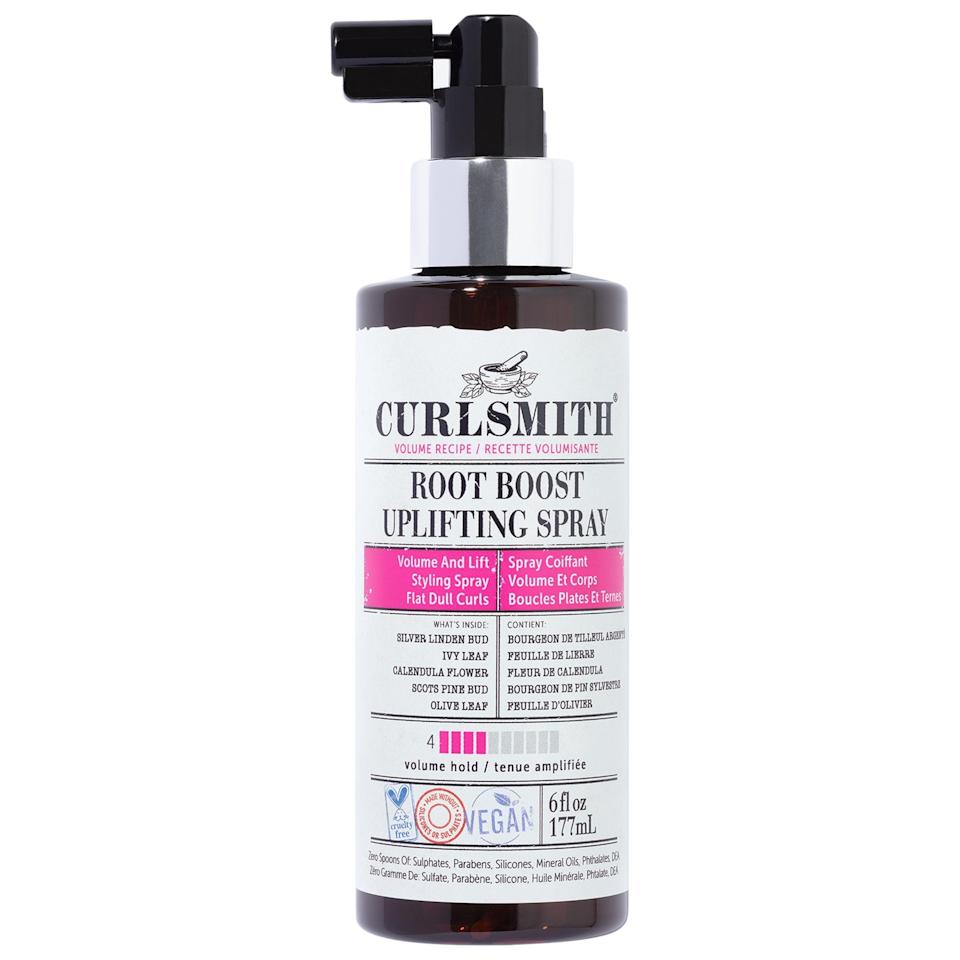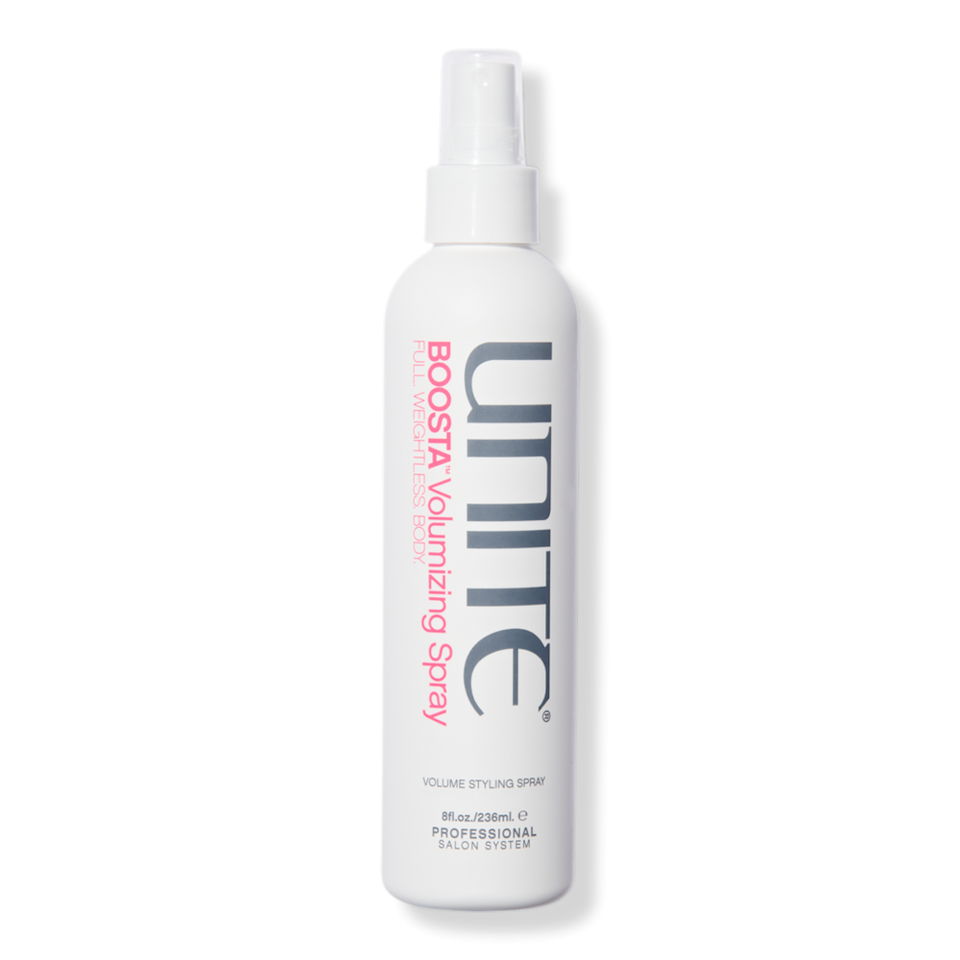


“Hearst Magazines and Yahoo may earn commission or revenue on some items through these links.”
There’s beauty in all hair curl typestextures and thicknesses. But let’s be real. Sometimes, those of us with fine hair just want to give our tresses a little extra oomph.
Fine hair describes a strand’s natural texture. But it’s often confused with thin hair, which refers to hair density. Here’s the difference: Fine hair has strands with a small diameter, explains Tonya Lane, a cosmetic chemist and founder of Curly Chemistrya platform that helps women navigate caring for textured hair using science. You can think of it as a forest filled with trees that have narrow trunks. Thin hairmeanwhile, is more like a forest with fewer trees overall.
Having fine hair comes with its perks. It tends to be lightweight, and it often naturally feels smooth and dries quickly. But fine hair can also quickly become oily and lack volume, which can make it appear flat, limp and even stringy. Yikes.
Meet the experts: Tonya Lane is a cosmetic chemist and founder of Curly Chemistrya platform that helps women navigate caring for textured hair using science. Nick Stenson is a hair care expert and founder of Nick Stenson Beauty. TerraRose Puncerellia celebrity hair stylist based in Los Angeles. Ricardo Rojasa celebrity hair stylist and founder of Ricardo Rojas Haircare.
Luckily, there are a litany of products that can help breathe new life into fine hair. So many, in fact, that the number of choices can feel overwhelming. But at the end of the day, styling fine hair often comes down to “creating the illusion that the hair is thicker than it actually is,” says Nick Stenson, a hair care expert and founder of Nick Stenson Beauty. And you don’t need to splurge on dozens of products to make that happen.
Not sure what, exactly, to add to your hair care repertoire? We’ve got your back. Read on to discover the one product hair experts say you need to style fine hair, as well as how to use it, and how to tell if you have fine hair in the first place.
How to tell if your hair is fine.
If you’ve ever confused fine and thin hair, don’t beat yourself up. They can look similar even though they describe different hair characteristics. So if you’re unsure whether your own locks are fine, here are a couple quick tests you can perform at home:
The hair strand test: Take an individual hair strand between your pointer finger and thumb, Lane explains. Rub the strand between your fingers and pay attention to what the hair feels like. “If you can barely feel it, you can barely feel anything, then typically you are in that finer hair category,” Lane says. If you can noticeably feel the strand and it feels rough or stiff, however, your hair strands are likely considered coarse. So if your hair still looks sparse even though your individual strands are coarse or thick, that’s likely because your tresses are grayfine swimming.
The scalp test: Run your fingers through your hair, says TerraRose Puncerelli, a celebrity hair stylist based in Los Angeles, and ask yourself whether you’re primarily feeling the skin on your scalp or your individual hair strands. The more scalp you’re able to feel, the more likely it is that your hair is thin. (Because it’s totally possible to have lots of hair, even when the individual hair strands are fine.)
How does having fine hair affect its appearance?
Fine hair is generally physically lighter than other hair textures because the cortex—the middle layer of the hair strand—is smaller, Lane explains. The cortex is made up of a protein called keratin, meaning fine hair strands contain less keratin overall. And with less keratin to provide structural support and integrity, hair can struggle to hold a shape, leading to strands that lack volume and lay flat on the scalp. But don’t worry. Having fine hair doesn’t mean you’re condemned to a life of limp locks. Read on…
The best product to give fine hair extra volume.
Drum roll please…“When I’m working with anyone with finer textured hair, I always use a root lifter,” Stenson says. “That’s going to give me the number one amount of movement. It’s going to move the hair away from the scalp.”
Ricardo Rojasa celebrity hair stylist and founder of Ricardo Rojas Haircare, agrees. In fact, out of all the products Rojas has used over the years, the one he carries with him at all times is the volumizing styling spray from his namesake brand, he says. “It will last. It will do the job. And it won’t create buildup.”
That’s right folks. There are volumizing shampoos and conditioners, mousses, and powders. But among our hair experts, root lifting sprays are the clear winner for achieving volume. Here’s how they work: Root-lifting sprays often contain polymers, Lane explains, which are very large molecules made up of small, repeating building blocks. These substances work to “create a thin, flexible film,” around the hair shaft, she says, which creates a more solid structure that lifts the hair away from the scalp and “the illusion of thicker hair and more volume.”
The polymers within root-lifting sprays also work to increase friction between individual hair strands, Lane says, “allowing them to pretty much stay lifted and separated enough where they’re not weighing down or collapsing amongst each other.” Many volumizing sprays also contain resin, she adds, a substance that functions similarly to polymers by coating individual hair strands and increasing their ability to hold in place. “They kind of give that stiffness,” Lane says.
Ingredients to look for.
When shopping for root-lifting sprays, be on the hunt for polymers like polyvinylpyrrolidone (also called PVP) as well as polyquaternium-11 on the ingredient’s label, Lane says. You may also want to look out for panthenol, she adds, a B vitamin that penetrates the hair cuticle and temporarily makes it stronger and appear thicker. “It’s all about plumping that individual strand up to its maximum capacity so that it gives you the most amount of body in your hair,” Stenson says.
You can also look for sprays that contain hair-strengthening ingredients like creatine, collagen, or keratin, Stenson says, as well as naturally moisturizing and cuticle-plumping ingredients like açai berry and aloe vera. Meanwhile, starches such as rice starch and hydrolyzed proteins can give fine strands a boost by absorbing excess oil and lifting hair from the roots, adds Puncerelli.
But don’t worry if that sounds like it wow too much label scrutinizing. We’ve done the work for you. Here are some root-lifting sprays that Women’s Health editors and hair experts love:
ROOT Lift Spray
This root-lifting spray contains several polymers that’ll help give your hair a little extra help in the volume department. It also contains natural ingredients such as rice water, radish root, and mushroom root extract, which nourish and smooth the hair.

RŌZ
Root Boost Uplifting Spray
This volumizing spray was formulated specifically for curly and wavy hair, although it works for all textures. This product contains hydrating ingredients that work to hydrate and moisturize hair strands to plump them at the root.

Curlsmith
BOOSTA Volumizing Spray
This volumizing spray contains polymers to give the hair some life and structure. Apply this spray to damp hair and gently comb through your locks to distribute the product from root to tip. Add heat styling to enhance results.

UNITE Hair
How to use it.
But even if you’re armed with the perfect root-lifting spray, things can still go wrong if you don’t use it properly. To get the best results, Lane recommends starting with damp hair, and then applying the root lifting spray to your hair in sections to ensure that you cover the entire scalp. If you prefer to spray the product directly onto your strands, try to hold the bottle three to five inches away from the scalp to avoid accidentally using too much and creating buildup. “And I would definitely focus on the crown of the hair, the sides and the top, ideally,” she says. “Because those areas tend to flatten first for fine hair.”
If you’re extra worried about buildup, you can also spray a small amount of the product onto your hands rather than directly into your hair, Rojas says. Then, massage the spray into the roots of your tresses with your fingers, he says. “Less is more.” If you use too much, you run the risk of making the hair feel product-y and look gummy, Puncerelli explains. And if the product contains any alcohol, it can make curly hair feel especially dry.
Many root-lifting and volumizing sprays are heat-activated, Puncerelli explains, which means you’ll probably want to heat style your hair with a blow dryer or a similar tool after using the spray to get maximum volume. This is because heat helps solidify the polymers and resins in the spray, which stops hair from being limp, Lane explains. “Basically, it helps to lock in that shape.”
So after you’ve sprayed the product into your hair, consider blow drying it with a round brush or by using a diffuser (if you want to emphasize waves and curls) to get that voluminous, blown out look, Lane says. Pro tip: Dry your hair upside down to reinforce extra volume, she adds, and don’t forget yours heat protectant.
Other products to consider.
If you have the time and money to invest in multiple hair volumizing productsexperts recommend adding mousse to your hair drawer next. “If it’s like, this is the only thing I can take with me, my house is on fire and I have just one hair product I can take with me,” Puncerelli says, “it’s going to be a lightweight mousse.”
Hair mousse is another favorite stylist when it comes to creating volume because they’re layerable, Puncerelli says. You can apply the product to wet hair, and then layer on a root-lifting spray or a curl cream onto the hair afterwards if you want to further enhance your look, she explains. Mousses also work very similarly to root-lifting sprays since they contain polymers that form a supportive structure around individual hair strands, she adds. Sign me up!
So at the end of the day, styling fine hair doesn’t have to be complicated or frustrating. With the right root-lifting spray (and a little technique), you can boost volume, create movement, and make your strands look and feel fuller in minutes, Stenson says. “That’s your little secret weapon.”
You Might Also Like
Source link

اترك تعليقاً